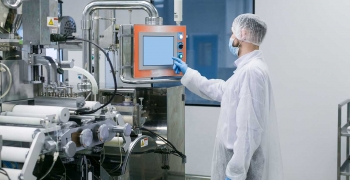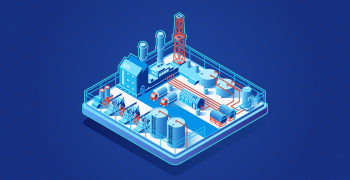Think about what it’s like to be a homeowner. After a few years have passed, the paint begins to lose its shine, a few faucets start leaking, power sockets begin to malfunction, and a few places around the house are still lit up by those flimsy little filament bulbs. These tiny things begin to add up, and somewhere at the end of a quarter, I’m stuck with a collection of unreasonable utility and maintenance bills. If I don’t stay on my toes and plug every leak as they appear, I’m likely to end up living in squalor while paying for a palatial suite. Now imagine having two homes or even three. Houston, we have a problem! Much like houses, process plants are built around myriad moving parts, and when age begins to take a toll on them, inefficiencies creep in. While utility prices move up, legacy plant equipment like filament bulbs incrementally add to the cost of upkeep. Tracing back to ageing equipment and monitoring systems, legacy plants waste approximately 30% of the energy they consume. Look at China, one of the largest industrial complexes on the planet. In 2016 alone, the country’s wind curtailment rate reached 17%. The volume of wind energy wasted was almost equal to the total amount of electricity consumed by Beijing in an entire year. It doesn’t stop here. To prove how resource intensive and environmentally unsustainable manufacturing can be, we can simply look towards the US. Americans contribute to 30% of the world’s waste through industrial pollution while consuming 25% of its resources. As a natural response, regulators are increasingly pressuring the industrial sector to reduce waste, curb pollution, and improve resource utilization—incentivising efficiency and penalizing violations. In a customer-dominated business landscape that offers little scope to optimize selling prices, manufacturers will have to explore their options for boosting competitiveness. Utility costs being largely beyond their control, a little creative thinking is necessary for reducing operating and production costs.
This is where the buzz around Industrial Internet of Things (IIoT) starts making sense. As sensors and IP-enabled devices proliferate, it will ultimately come to dominate the factory floor. More so, as manufacturers realize the potential of these tools and capabilities to collect information, they will be able to create leaner processes, streamline operations, and drive cost efficiencies. Consider the simple task of equipment maintenance. In the connected ecosystem, machines can send alerts that communicate their status, enabling production detours without disruption. And, this is just one production line within a single factory. Imagine the possibilities across multiple sites connected via Cloud Enterprise Resource Planning (ERP) system. This will create a scenario wherein learnings and best practices established in one model plant can be seamlessly exported and implemented across every connected facility. If reports are to be believed, manufacturing plants that have digitized their processes experienced 82% efficiency increase. In terms of reducing costs of utility consumption, a Japanese chemical major embedded 148 steam traps with sensors, thereby reducing the cost of steam by seven percent. With IIoT, plant operators now have access to an increasing volume of asset-related data. Going by present standards, operators have been leveraging this information to transition from their flawed, reactive maintenance activities to a more efficient predictive maintenance framework. However, the major hurdle still remains – implementing efficient maintenance prioritization across multiple sites. This sets the stage for deploying total productive maintenance (TPM). Developed in the ’50s, this eight-pillared model’s goal is to perpetually focus on preventative and proactive techniques for enhancing equipment reliability and eventually, productivity. Combining CMMS software and data gathered through IIoT, maintenance personnel can monitor asset groups, specifying parameters for triggering alerts, automating responses, and work order generation by directly interfacing with the Cloud ERP.
In a bid to increase plant safety, operators have been continually striving to reduce the need for manual intervention on the factory floor. Robotics and process automation has been successfully used across industries to that effect. Going forward, removing the human factor should also yield efficiency gains in terms of throughput and material consumption. The stream of data generated by IIoT presents an excellent opportunity for doing just that. Manufacturing systems which have been able to capitalize on machine learning and predictive data analytics have reportedly improved production capacity by 20%, while lowering resource utilization by four percent. Some might argue that the human faculty for reasoning and logic are still essential to manufacturing. So, what happens when machines begin to think like us? Artificial intelligence (AI) will become a critical catalyst acting as the central nervous system of the connected plant ecosystem, and use data to squeeze the maximum value out of every dollar spent.




